Nijmegen, Monument for Tiberius
Nijmegen: city in the Netherlands, where several Roman settlements have been discovered.
Monument for Tiberius
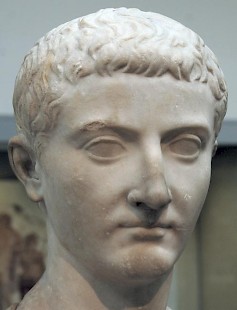
In the years 16-13 BCE, the Roman prince Drusus, acting on behalf of the emperor Augustus, reorganized the strip of land along the Lower Rhine as a military zone. A very large fortress was built on the hill that is now known as Hunerberg, situated on the south bank of the river Waal (the main branch of the Rhine). In the years 12, 11, and 10, the young prince conquered the country between the Rhine and Weser, but he died in 9 after an accident. His brother Tiberius finished the conquest in 8. These events mark the beginning of the Roman age in Nijmegen, and there must have been a civil settlement near the Huneberg.
A second phase of war started in 5 CE, when Tiberius returned to the army of Germany Inferior and conducted two campaigns that brought him to the river Elbe. The land that had been subdued by Drusus, was now converted into a tax-paying province. This was a big victory, but four years later, the Germanic warriors revolted and defeated the legions XVII, XVIII, and XVIIII in the Teutoburg Forest, and Rome had to reorganize its frontier again. Still, the Romans did not give up the land across the Rhine, and Drusus' son Germanicus led several campaigns on the east bank until he was recalled in 16/17 by Tiberius, who had by now succeeded Augustus as ruler of the Roman world. Germanicus entered Rome in a triumphal procession.
The monument that was found at the Kelfkenbos in Nijmegen in February 1980 commemorated these wars. Two blocks of what must have been a very tall column have survived, decorated on all sides with reliefs, showing several gods. One side, however, shows a toga-clad man, pouring a libation at an altar mentioning TIB CSAR, which means Tiberius Caesar. The sacrificer is crowned with a laurel wreath by a Victoria.
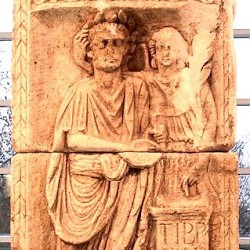 Nijmegen, Monument to Tiberius: sacrifice |
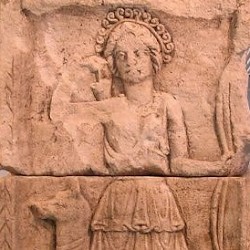 Nijmegen, Monument to Tiberius: Diana |
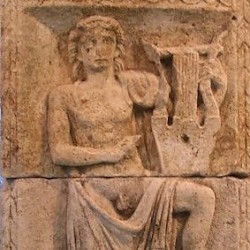 Nijmegen, Monument to Tiberius: Apollo |
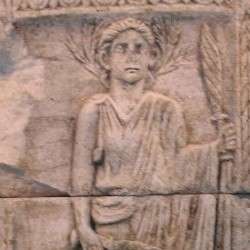 Nijmegen, Monument to Tiberius: Ceres |
The monument can have been erected on several occasions:
- after Tiberius had finished Drusus' conquests in 9 BCE;
- after Tiberius had reached the Elbe in 5 CE;
- when Tiberius had become emperor in 14;
- after the campaigns of Germanicus, at the occasion of his official triumph.
The military nature of the monument seems to argue against the third possibility. Unfortunately, it is not completely clear when the civil settlement Batavodurum, where this monument must have stood, was founded. For some time, it was believed that there were no finds from the age of Augustus, which seemed to suggest that the monument was erected during the reign of Tiberius, and therefore suggested the fourth option. However, it was pointed out that the site was poorly known and that large parts of it had never been explored, so that the monument could be much older than archaeologists were aware of. One excavation could change everything archaeologists thought they knew.
In 2005-2006, excavations at the St.-Josephhof indeed proved that there were people living in Batavodurum in the second or first decade BCE., which proves that the civil settlement was as old as the military settlement, and reopens possibilities one and two.
The column of Tiberius is the largest and oldest Roman monument in Holland, and is now to be seen in the Valkhof Museum.